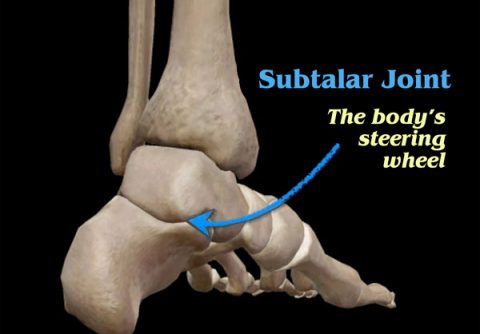

Another area that commonly becomes restricted due to protective muscle guarding from ankle injuries is the talocrural joint (Image 3.). During healthy gait, this joint should dorsiflex 15 degrees. If the ankle is restricted in dorsiflexion, the knee and hip will not fully extend. This can result in back pain from decreased hip flexor mobility and repeated extension and rotation of the lumbar spine during gait. Since the mid-foot joints control motion of the foot anteriorly, clients often notice a dramatic difference in the ability to bend their toes and walk more freely when treated with graded exposure stretching techniques such as those shown in the accompanying MAT video.

These are just a couple of examples of how a limitation in one spot can affect something else much farther up the kinetic chain. So, if your clients have foot, knee, hip or low back pain and have been struggling to get relief, try mobilizing the foot and ankle joints using these graded exposure soft tissue stretches.
Homework
For home self-care, I suggest that my clients practice rocking back and forth with the feet dorsiflexed. I call this “dorsi-rocking” and it’s one the best ways to fully restore function of the feet, ankles, knees, hips, and pelvis. The act of dorsiflexing the feet while rocking has a prying effect on the posterior hip capsules, which reflexively activates the pelvic floor. This then allows the hips, pelvis, and deep abdominal musculature to maintain proper alignment and operate more efficiently when gravitationally loaded (such as in squatting and lunging). By allowing the joints to work independently, yet synchronously (the way Mother Nature intended), this simple corrective exercise enhances the hands-on myoskeletal therapy by resetting postural proprioception, improving balance and reducing foot and ankle pain.

ACTION: Mobilize Feet & Ankles
- Therapist grasps client’s foot and abducts client’s extended leg off the table
- Therapist’s right webbed hand grasps below the medial and lateral malleoli and his left drapes over his rightTherapist places client’s foot and ankle between his slightly flexed knees
- Therapist drops his body weight back to decompress the ankle
- Therapist twists his hips to mobilize the ankle and foot bones
- To restore calcaneal alignment for those with a hyperpronated foot, therapist brings the foot into supination, asks client to pronate against his resistance to a count of 5 and relax, and therapist supinates the arch by inverting the ankle
- To restore mobility to the bones of the arch, therapist’s fingers push the arch up as the therapist drops his weight back causing plantar flexion of client’s foot

ACTION: Restore dropped navicular and cuneiform in hyperpronated foot
- Right sidelying client flexes his right hip and knee and therapist’s right hand grasps client’s right forefoot
- Therapist’s left hand pulls toes into plantar flexion while his fisted right hand contacts the navicular and cuneiform bones
- Client is asked to pull his toes toward his nose against therapist’s resistance to a count of 5 and relax
- Therapist’s knuckles strip the arch to help lift the hyperpronated foot

ACTION: One-legged leg balancing to mobilize ankle and strengthen arch, ankle, and leg muscles
- Standing client places his right foot on a “wobble” platform and flexes his left knee to 90 degrees to increase strength and improve whole-body proprioception
- Client attempts to hold for 30 seconds to a minute (2 to 3 sets) and repeats on both feet daily









